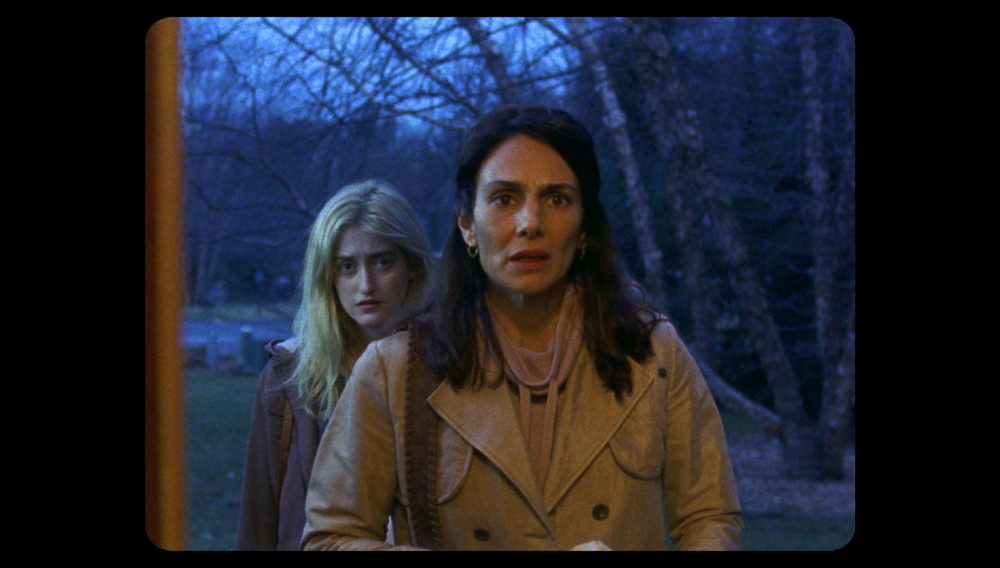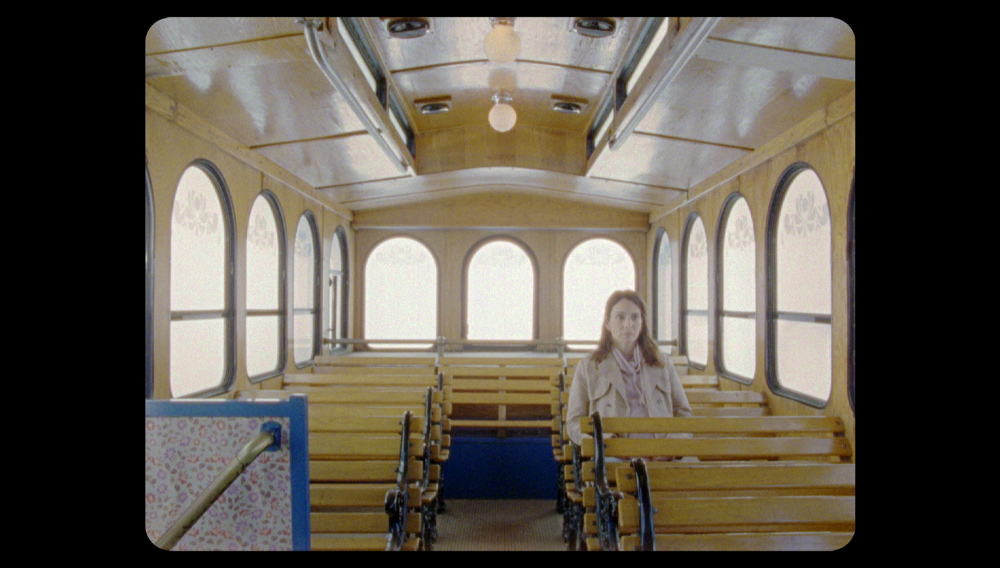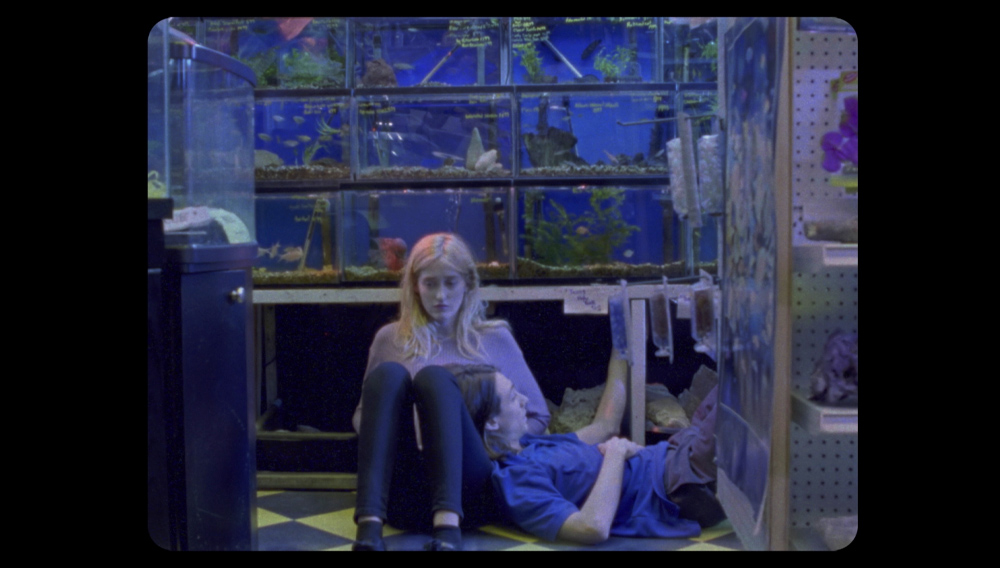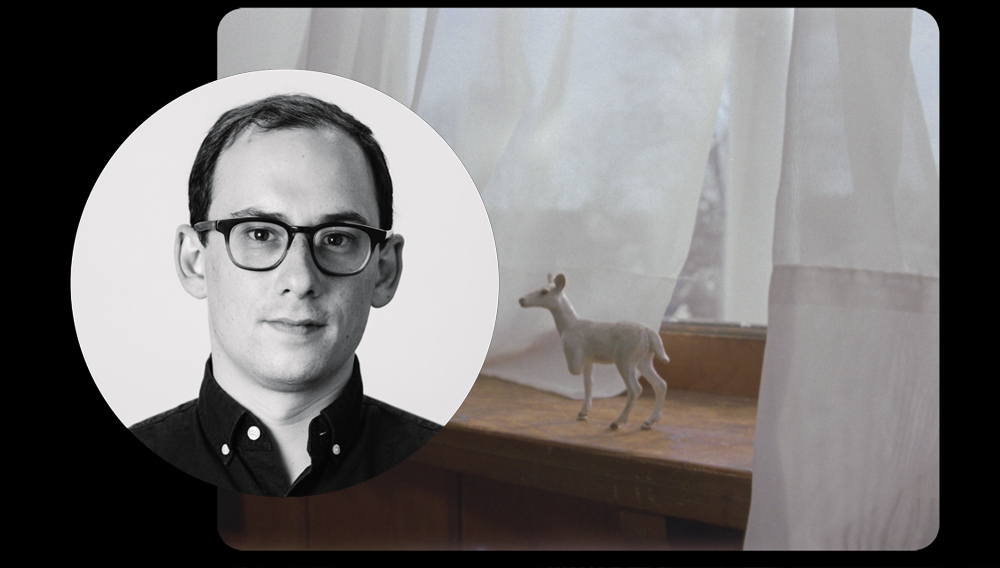After a decade of working his way up through the indie film ranks, writer-director-producer Theodore Schaefer at last sees the debut of his highly distinctive first feature, co-written with Patrick Lawler, called Giving Birth to a Butterfly. The surreal drama took its buzzworthy festival bow at 2021’s Fantasia International Film Festival, but only recently made its U.S. roadshow theatrical run before dropping this week as an exclusive streaming premiere on Fandor.
Annie Parisse (Diana) and Gus Birney (Marlene) top an all-star cast of theatrical notables as two women, a generation apart, whose spiritual compasses are spinning wildly. After pharmacist Annie is scammed by a credit fraudster, she leaves her fraught household behind to hit the road with Marlene, her son’s pregnant (but not by him) girlfriend, on a quest to track down the culprit at a mysterious address… and, perhaps, find themselves in the process. The film’s uncanny tone, eccentric characters, theatrical writing and imaginative art design — all assembled before cinematographer Matt Clegg’s 16mm camera — conspire in one of the year’s most original films.
Schaefer, who also produced Jane Schoenbrun’s coming-of-age Internet spooker We’re All Going to the World’s Fair and Dustin Guy Defa’s latest comedy The Adults, spoke recently with Keyframe about his long-term collaboration with Lawler, nailing the film’s unusual vibe and the challenges of shooting a character (played by veteran actress Judith Roberts, whose career started as “The Beautiful Girl Across the Hall” in David Lynch’s Eraserhead) as twins in a climactic scene.

KEYFRAME: The vision of Butterfly is so pinpoint specific and idiosyncratic that it lands on the word “peculiar,” which for me means disorientingly “off” but in a stimulating way. Like you ate the wrong midnight snack and are having a particularly vivid dream. How does that happen?
THEODORE SCHAEFER: We’re maybe a bit peculiar ourselves. We [Schaefer and his writing partner Patrick Lawler] had been writing together for four years when we started to work on this. We’d done a couple of features that were a little too expensive to make, and we made a couple of shorts together. We’re always interested in the surreal, and entering the audience through their subconscious instead of their conscious to get across certain themes indirectly, probably because those are the kind of films I love the most. And Patrick is a poet. We bonded over literature and poetry. That has given our writing more of a literary feel.
What’s your collaborative process like?
He’s 40 years older than me so it’s a totally different approach sometimes. Usually, one of us has an idea, brings it to the other, that person adds ideas, then we throw stuff on a Google doc. Once we start writing, we’re on the phone. We pretty much don’t write anything on paper unless we’re both talking through it, which creates this fun effect: When I watch the films, I don’t know who wrote what. I can remember certain things, but we just share a brain. He’s had a whole career. He’s been a professor. He’s semi-retired. He has no ego about this stuff, which has helped me [lose my] ego.
How did you meet?
We met through a therapist, which is weird. We had the same therapist when I was still up in Syracuse after I graduated. [The therapist said], “I think you should make a movie about this guy’s life.” He had gotten permission to share Patrick’s work with me. He has this book of poetry that’s poems and then interviews with Patrick about his life. He’s had a very strange life. So, I read his poetry. I was blown away. It took me a year, and then I called him up and we started working together.

Was there a particular germ for this?
When I first moved to New York, I followed this secret-shopper scam because I was curious, and they mailed me a check. The idea was you deposit the check in your bank, you buy some goods at Wal-Mart, then you wire the rest of the money to the Philippines through Western Union. I was like, “Well, that’s insane.” But there was a return address, just a residential house in Kentucky. That was the germ.
A lot of times, the way we work is one of us will go, “I don’t know what this is yet, but here’s the seed.” Then the other one takes it and a couple days later goes, “Here’s what I’ve brought to it.” Patrick had been working on a presentation at this poetry conference on Mina Loy, the poet who wrote the little thing that Marlene reads at the very beginning. So, those two ideas. We were interested in exploring identity, especially in somebody older, because those films tend to focus on younger people. A film about finding your identity when you’re losing your identity made a lot of sense, and then bringing in Mina Loy and other themes we were thinking about in previous work allowed it to grow.
It really captures a different headspace. Some people like to mention David Lynch but it’s not really that. I know the actress Judith Roberts, who was in Eraserhead, makes an appearance.
That’s not intentional.
It has its own otherworldly tone, this heightened something or other. How did you go about creating that feel?
That became clear in the writing process, the most important part was this specific wavering tone. It’s also fun working with the actors because it gives them a lot of room. Some of them get to be big, but they have to find ways to ground it. We were lucky. We got to do a week of rehearsals ahead of time, and everyone’s seeing how the others were playing and able to adjust before we were rolling. It would have been difficult to figure that out on set.
Early on, our casting director Kate Geller smartly said, “You should cast theater actors. They’ll get it, they’ll be more prepared.” Not that strictly film actors aren’t prepared, but theater actors are ready to come off-book and workshop ideas. I told her I didn’t care about trying to get big names. She’s like, “If you want the best actors available, I can get you great actors. They’re not necessarily going to be Robert Pattinson.” Great, I don’t like auditions.
The production design is a huge deal, with meticulous details like wallpaper and the strange dollhouse vibe of the interiors. There’s a lot of riffing on smothered domesticity. How did all that come together?
I have a good friend who is a textile designer. Months ahead of pre-production, we went over the script and started pulling colors from a box of Pantones. We took that to our production designer and our costume designer, and we talked about what colors make the most sense and how do we create the sense. It’s playing with the idea of domesticity as a cage, both literally and how the characters view it. It’s not so much “Isn’t suburbia hell?” but there’s something heightened to this version. Drew, the son, works in a pet shop surrounded by animals in cages. He verbalizes that at one point, where he sees everybody stuck in their own cage. Everybody is. The question is who’s building the cage.
Cassandra Holden, who did production design, she’s incredible. A lot of it was finding ways to feel like a heightened version of a domestic space without it feeling absurd and too obvious. Some of that was finding great spaces. I don’t even know how many homes [we looked at], just family and friends saying, “You could shoot here.” That gave us the ability to find the exact houses.

What’s it like shooting in 16mm these days? It’s the format that won’t die.
I know it’s having another resurgence, which I’m thankful for. I love it. When I went to film school, we were still shooting and editing on film. It creates a useful discipline on set, but also nothing looks or feels like it. You can try as hard as you want to create a digital effect, but even if you can trick the eye, you can’t trick the mind.
In this kind of film, we’re trying to play with two opposing things where the film itself feels distanced. It’s not a realist film. You want to create some layers of separation, but at the same time you want to lull people so it becomes more emotionally impactful. Film plays with dream and memory a lot better from a texture standpoint. Also, it honestly increases your production speed so much. I know it’s expensive, but it’s worth its weight. Actors love it, the crew loves it. Everybody loves working on film. It’s a more tactile process.
How did you work through the twin sequence in the film’s final minutes?
The biggest thing was the Ninas (enigmatic figures, both played by Judith Roberts). It was a gamble. I didn’t fully realize how difficult shooting that was going to be. It was late at night, with a very old actress having to change outfits constantly. She was so good that she put us all to shame. We were all so tired. It’s three in the morning. Every take, she’d have to go change and come back. I don’t think she made a single mistake the entire shoot. I couldn’t imagine somebody better.
A lot of filmmaking, you don’t realize how insane your idea is until you’re there. And the best thing to do is to go, “I’m just going for it, it’s either going to work or it’s not.” The worst thing you could do is back out and soften it. Then you make a middling product because you’re not committing. I kept being like, “We’re committed. Whatever happens, happens.”




